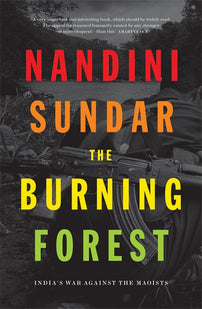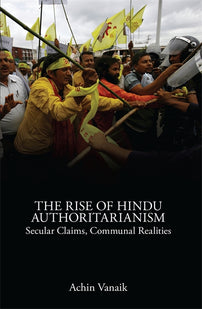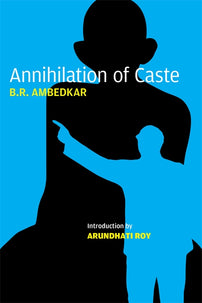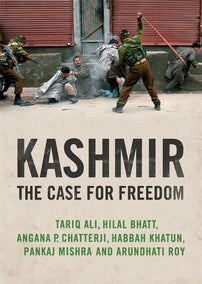The Forsaken Ones
Since the beginning of April, Muslims in India have faced increasing religious persecution and attacks, events that have escalated across the country. Shivangi Mariam Raj reports on this state-led hatred and violence, and the threat of genocide facing the country's 207 million Muslims.

When I saw the photograph of Wasim Ahmad Shaikh, the green tin of his shop torn down, staring through the rubble of the afternoon, I was reminded of Mohammad Razzaq Alam who I had met during the Delhi pogrom in 2020. Razzaq, a disabled man, was forced to climb four storeys of his house in Mustafabad after a Hindu militia set it alight. I remember the smell of rubble, smoke, and dust that day, and I remember too how he was hounded by the local administration for being a “rioter”. Wasim has also suffered greatly. In 2005, he lost both of his hands in an industrial accident, and on April 11 of this year his small shop at Chhoti Mohan Talkies was demolished by the local authorities after they accused him of throwing stones at a Hindu religious procession the day before.
In the past month, violence against Muslims has escalated in India, with leading human rights defenders and political experts expressing their concern that Muslims in the world’s largest democracy face a potential genocide. The events that have taken place over these few weeks, however, are only the latest in a long series that have not only normalised the killing and dispossession of Muslims in the country, but have actively celebrated and rewarded it. But to truly understand the dangerous predicament India’s 207 million Muslims find themselves in today, it’s important to remember that this is the culmination of a gradual process, not a singular sequence of events. Classifying minorities and minoritised citizens as necessary threats, who are either to be disciplined or eliminated, has been a routine feature in the design and practice of modern nation-states, of which India is no exception.
***
In the Rajasthani city of Karauli, members of the Hindu nationalist groups Vishwa Hindu Parishad (VHP), Bajrang Dal, and Rashtriya Swayamsewak Sangh (RSS) marked the Hindu New Year on April 2 with a procession that passed through a Muslim-dominated neighbourhood. As they did so, the marchers shouted offensive slogans and blasted provocative songs while dancing with weapons that included swords, axes, guns, batons, and gadas. The rally was carried out in the evening, at a time when Muslims observing the holy month of Ramadan were breaking their fast. It remains unclear who began pelting stones first, but what followed ended with Muslim homes, shops, and vehicles being set alight, along with the vandalisation of mosques and the looting of Muslim-owned businesses. Just a week later, on April 10, on the occasion of Ram Navami, a similar series of Hindu militia-backed attacks occurred in other Indian cities and towns, including Bokaro and Lohardaga in Jharkhand, Bankura and Howrah in West Bengal, Khambhat and Himmatnagar in Gujarat, Mumbai and Amravati in Maharashtra, Mulbagal in Karnataka, Vasco in Goa, and Kurnool in Andhra Pradesh.
[book-strip index="1" style="display"]As fire and blood have devoured their precarious worlds, Indian Muslims have found even the familiarity of their homes and mosques transformed. On that same day, April 10, the city of Khargone in Madhya Pradesh was burning as well. Two days later, Abdul Hamid, an old sightless man from Kukdol village, was attacked inside his own home when a Hindu militia suspected him of sheltering “rioters”. A mob of over 60 men entered his house and threatened to rape his deaf and mute daughter, tore his wife’s clothes, and attacked the family with stones to chants of Jai Shri Ram. In the same village, others were denied rations and groceries by local shopkeepers who insisted that Muslims have no place in the village. Several testimonies by survivors recount how their neighbours threw stones at their homes and attacked them with swords. Muslim traders testified to the selective targeting of their establishments, pointing to the involvement of people they have known for decades.
As the events continue to escalate, and as the shock continues to gnaw at Muslims, there is a feeling that they have been betrayed by their own. Thousands across the country are now homeless, displaced without any source of income. Several Muslim families, including children, are on a run, hiding to save their lives. Injuries, both physical and psychological, run deep as Muslims are declared “outsiders” and “enemies” within the very spaces they have long inhabited; the meaning and memory that local streets and neighbourhoods once invoked having been stolen from them.
And, despite claims to the contrary, nothing about these attacks is spontaneous. They have been well-coordinated by Hindu saints and right-wing leaders who have designed their processions to challenge Muslim access to social and economic spaces. In all of these episodes, there has been a glaring lack of police action against the perpetrators. The police either act as bystanders or in some cases even aid the mob. On this account, the common designation “communal clash” or “riot” is a misnomer for state-sponsored assault on Muslims.
***
If we trace the topography of segregation in India, we can see that for several decades now certain neighbourhoods, residential blocks, educational institutions, workplaces, and public spaces have routinely practiced discrimination against Muslims. And when not forced into ghettos, Muslims have been excluded from offering public prayers in cities across the country. In November 2021, Gurugram in Haryana echoed with the slogan, “gun down the traitors of Hinduism and Hindustan” after Muslims were accused of causing “public inconvenience” by exercising their right to offer collective namaaz on Fridays. A week earlier, Pushkar Singh Dhami, the Chief Minister of Uttarakhand, launched a “verification drive” after Hindu religious leaders, including Swami Anandswaroop, urged a ban on non-Hindus (implicit reference to Muslims) who were settling in the state.
In today’s India, Muslims are not even counted as second-class citizens — instead they have been reduced to a sub-human category, an existential blemish, a spatial burden. They are simultaneously placed within and outside the ambit of law, where all violence against them is either legally sanctioned or else permitted under extrajudicial logics of permanent security. Such developments have been used by the ruling Bharatiya Janata Party (BJP) to secure electoral victories, where Muslims are viewed as ugly sights and sites that must be purged from the landscape of promise and prosperity, the landscape of Hindu Rashtra. We can see this most clearly in the increasing use of bulldozers by the state to target Muslim properties. Bulldozers have set in motion an architecture of ruin, something that has been perfected in India’s colonial laboratory in Kashmir, and is now being implemented across the states of Madhya Pradesh, Uttar Pradesh, Gujarat, and Delhi. They are a tool for ethnic cleansing, for constructing the Muslim ruin as a precondition for brahmin-majoritarian development.
In Gujarat’s Anand district, homes and shops owned by Muslims have been razed, with the district authorities citing their participation in the violence of April 10. A similar targeted demolition was undertaken by the Madhya Pradesh administration, who emphasised that this is the way to ensure justice. In 2021, the state passed the Prevention of Damage to Public and Private Property and Recovery of Damages Bill which stated that the local government could recover up to twice the cost of damage to public property from protesters. While this law has been used since last year against Muslims, this year it saw a much uglier turn, with the state’s home minister, Narottam Mishra asserting that “the houses from which stones were pelted will now be reduced to a pile of stones themselves”. Most of the houses and shops targeted in Madhya Pradesh belonged to Muslim men who had already been arrested by the police on false charges. Neither were the charges of stone pelting substantiated with adequate evidence, nor were residents given prior notice.
[book-strip index="2" style="display"]On April 20, amidst the presence of paramilitary forces, and at the behest of BJP Delhi president Adesh Kumar Gupta, the New Delhi Municipal Corporation razed Muslim houses, pushcarts, shops and a shrine in the Jahangirpuri neighbourhood. Small structures belonging to working class, oppressed caste Muslims were coded as “illegal encroachments”, thereby making their destruction not only legally permissible, but politically necessary. Referred to as “Bangladeshis” and “Rohingyas” by several political parties, Bengali-speaking Muslims in the area have long been considered “infiltrators” in their own country. A particularly dehumanising photograph emerged from the area of Muslims locked behind a barricaded lane, forced to gaze on helplessly at the wreck beyond. On April 16, the same area suffered a series of attacks, including arsons and the humiliation and injuring of Muslims, by a nearly thousand-strong militia during a procession to celebrate Hanuman Jayanti. As eyewitness accounts reported, the Hindu mob attempted to plant saffron flags over the local mosque, and days later part of the entrance of the same mosque was demolished by state bulldozers.
In Uttarakhand’s Roorkee, Muslims were also attacked on the same day. Despite there being spatially marked neighbourhoods for each of the two communities, several Muslim families in Dada Jalalpur village have now been forced to flee, fearing more violence. Bulldozers were stationed outside the Muslim area, with the police demanding that residents surrender. Three days later, on April 19, a video emerged of a Hindu religious leader, Prabodhanand Giri, threatening to organise another aggressive religious parliament in the region if their demands — of razing Muslim homes to dust — are not met.
In this series of political vendettas, Muslims are being presented as “anti-social elements” who have no right over shared social spaces, not even the intimacy of their own homes.
***
Towards the end of December 2021, a Hindu religious congregation was held in Haridwar, Uttarakhand, that included popular religious preacher Yati Narsinghanand Saraswati, along with other self-fashioned saints who each delivered a series of incendiary speeches. To hear these preachers speak, it is not just India but the entire planet that is under threat from “Islamic jihad”. For them, only a Myanmar-style ethnic cleansing of Muslims would prevent it. Several Hindu groups participated in this hate conclave, where majoritarian prejudices were mobilised into a war cry demanding the genocide of Muslims. “Shastra Meva Jayate” — a spin on the Indian state emblem “Satya Meva Jayate”, truth alone triumphs, with truth replaced by weapons — echoed through a packed hall, as even young children were given arms training. Earlier, on August 8, 2021, a similar rally had pierced through the heart of the Indian capital, where under the guise of protest against “colonial-era laws”, Hindus were urged to pick up weapons and exterminate Muslims. Rather than face any repercussions, organisers of both gatherings were rewarded with loud public support, and even those who were jailed temporarily were later permitted to appear at other such events in clear infringement of their bail conditions. Several of these leaders have flaunted their connections with the ruling party and police forces, and some, including Kapil Mishra and Anurag Singh Thakur, have only grown in popularity since. Such impunity has kept hundreds of these seemingly unrelated events sustained across the country. And these incidents played no small part in the turbulent events of April this year, where attacks on Muslims have scorched our calendars forever.
And while songs that use popular techno and psychedelic aesthetics and contain offensive lyrics modelled after the slogans and speeches spewed incessantly by Hindu religious leaders, many threatening extreme violence against Muslims, were played thunderously in Muslim-dominated areas, there have been repeated calls to ban azaan by political leaders who believe that the Muslim call for prayer “disturbs students and patients”. As per a recent report, over 70% mosques in Mumbai have already stopped using loudspeakers for fajr azaan, and such developments come amid Maharashtra Navnirman Sena chief Raj Thackeray’s diktat that loudspeakers on mosques in Maharashtra be removed before the Eid celebrations on May 3. This echoes similar demands across Karnataka and Madhya Pradesh where Hindu militia groups have threatened to construct a counter-sonicscape by playing Hindu religious chants over loudspeakers mounted opposite mosques.
***
All of this constitutes a spectacle of majoritarian masculinity performed on the Muslim body. And with rulings like the March 2022 decision of the Karnataka High Court that upheld a ban on wearing the hijab in educational institutions — an act that further diminishes access to education for Muslim women — a de facto apartheid against Muslims in India has become de jure.
While the Hindu nationalist movement spreads the fear of Muslims coming to outnumber Hindus, genocidal violence becomes a tool for population management, a remedy to alleviate demographic anxieties. The Population (Control, Stabilisation, and Welfare) Bill introduced by the BJP in Uttar Pradesh last year offers one such attempt at an ethnic reordering in order to forestall the “dangers of a high fertility rate among Muslims”. This is why when Muslims are driven out of their villages in Roorkee, the right-wing militias celebrate. And when Hindu priests urge the men of their community to rape Muslim women, the emphasis is on “rescuing” them from the perennial threat of Muslim men, as well as “rescuing” the nation from any future threats posed by the Muslim reproductive autonomy.
Mehrun Bi was attacked with swords by her neighbours in Anand Nagar, police officials tore off Mohammad Nadeem Sheikh’s clothes in Gulshan Nagar, and Ibraish Khan’s corpse lay on the streets between Islampura and Indore for eight days simply because these lives are expendable. They were not targeted as aberrations. This violence has been unapologetic, written into the dominant social grammar of the country. Slow deaths have always been administered to Muslims by structures of segregation and seclusion — and now they are culminating into the shape of a genocide.
And this violence extends to the economic domain as well. India’s Muslims, particularly Pasmandas, have been struggling for decades against relatively lower socioeconomic status, and now they are being systematically removed from their meagre means of sustenance as well. During the week-long Hindu observation of Navratri in early April, several Hindu-supremacist outfits imposed a ban on selling meat in parts of Delhi-NCR. In Karnataka, other groups have called for a complete boycott of Muslim fruit vendors, taxi drivers, and halaal products. In Madhya Pradesh’s Khargone, even as Muslim shops remain charred and damaged, messages are circulated on WhatsApp listing Muslim-owned businesses to be boycotted by Hindu women.
***
As per the statistics released by National Crime Records Bureau in 2021, Muslims constitute 19.1% of the total prison population in India, against a mere 14.2%. share of the population as a whole. The National Campaign Against Torture’s 2019 report further reveals that the majority victims of police torture are Dalits, Muslims, and Adivasis, with significantly lower chances of survival in custody.
Barely three days after the violence in Jahangirpuri, the only major arrests were of five Muslim men: Ahir, Ansar, Dilshad, Imam Sheikh, and Salim. These men have been charged under the contentious National Security Act (NSA), which allows the police to detain a person for up to a year on the suspicion of being a threat to national security. It is critical to note here that just a day before these arrests were made, Delhi Police withdrew its statement linking the VHP to the violence after the right-wing outfit threatened to attack the police if any action was taken against its members. In Khargone and Karauli, several Muslim families claim that there have been enforced disappearances, torture by police officers, arrests and detentions on fabricated charges, as well as the targeted harassment of their loved ones by the local administration.
Systemic vulnerability of the community, including absence of sound legal aid and scant access to education and employment, strengthens this carceral regime established under decades of prejudicial policy and legal infrastructures. Every episode of mass violence produces a vortex of temporal confinement for the community where it is forced to wait: wait for the arsonists to empty the streets, wait for the state to compensate for a lifetime of savings, wait for the rubble to release a handful of memories from its grip, wait for fact-finding missions, for their children, for court hearings, wait for justice… Expelled from histories shared with their compatriots and denied a future of dignity, Indian Muslims survive suspended between legitimate and illegitimate forms of violence. With wrongful incarcerations, stress-induced deaths, substandard living conditions, and the burden of constantly rebuilding the broken, the community is being swiftly robbed of its time.
In these diffused and enmeshed forms of hatred, separating the state authorities, religious leaders, neighbours, or one’s own childhood friends is becoming increasingly difficult. As Indian Muslims face what seems an imminent genocide, what could be worse than this hatred? Indifference, perhaps. Boris Johnson cheerfully poses atop a JCB bulldozer in Gujarat and Donald Trump enjoys a lavish dinner in Delhi as, barely a few kilometres away, Wasim and Razzaq withered into marginalia scribbled over a catalogue of the forgotten; the forsaken ones.
Shivangi Mariam Raj is an essayist, translator, and independent researcher from Delhi, India.




